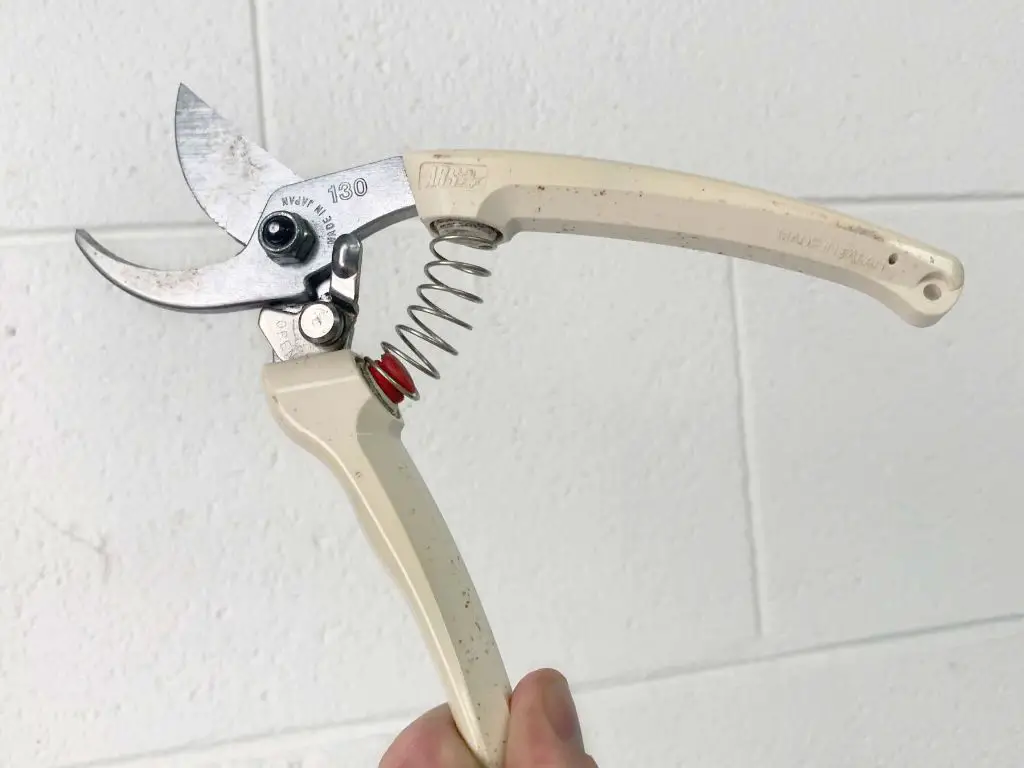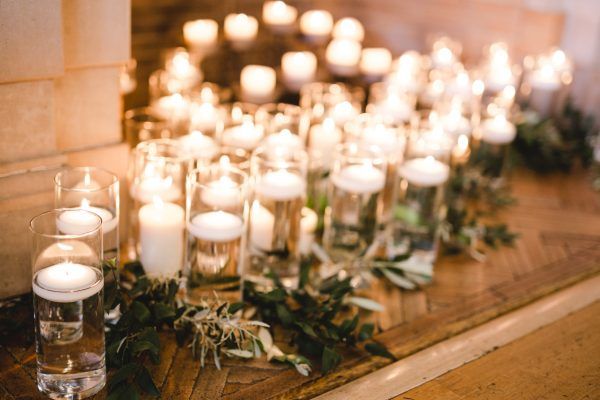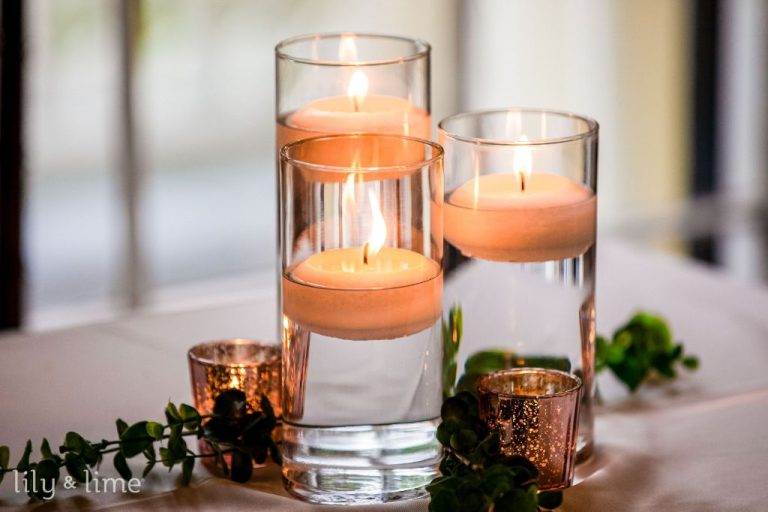What Is Stem Cutter Used For In Floral?
A stem cutter is a specialized tool used in floral arrangements and flower arranging to cut flower stems. It consists of a sharp blade designed specifically for making clean, angled cuts through softer plant stems and woody stems (Florists’ Review).
Stem cutters serve several important purposes in preparing flowers for floral designs. Using the proper cutting tool creates an angled, smooth cut surface on the stem, which maximizes water uptake and prevents crushing or damaging the stem. This helps prolong the lifespan of cut flowers. Stem cutters also provide efficiency in cutting numerous stems quickly and uniformly compared to scissors or household knives. Overall, floral stem cutters are an essential tool for floral designers and arrangers to properly prepare flower stems before placing in a vase.
Sources:
[1] http://extension.msstate.edu/cut-fresh-flowers
[2] https://www.floristsreview.com/buyers-guide/florist-supplies-equipment/cutting-tools/stem-cutters/
Cutting Stems

A stem cutter is a handy tool for cutting flower stems precisely. Using a stem cutter rather than scissors or a knife can provide several benefits when preparing flowers. According to Salisbury Greenhouse, stem cutters make clean, precise cuts to avoid crushing or damaging stems (source).
Cutting stems at an angle increases the surface area for water intake, allowing the flowers to absorb more water and last longer. Teleflora recommends cutting stems on a 45-degree angle with a sharp blade for maximum water flow (source). The angled cut a stem cutter provides maximizes water intake compared to the straight blunt cut from scissors.
Stem cutters are quick and efficient tools to prepare numerous stems at once. Their sharp blades make clean cuts in one motion without crushing or damaging the stem. For floral arrangements, stem cutters are ideal for cutting multiple stems to length.
Preparing Stems
A key use of stem cutters in floral design is to prepare stems before arranging flowers. This involves stripping leaves and thorns, splitting thick stems, and scraping stems to promote water uptake.
Garden shears or floral snips can be used to cleanly remove any leaves or thorns from the bottom few inches of the stem. Leaves left below the water line will rot and provide a breeding ground for bacteria. Thorns can damage other flower stems when bundled together in an arrangement. By using cutters to strip stems, a clean, smooth surface is created for water absorption (Salisbury Greenhouse).
Woody stems from branches, vines, or shrubs often need to be split to allow more water intake. Stem cutters can be used to slice up the bottom 1-2 inches of these thicker stems before placing in water. This exposes more surface area to the water and prevents crushing of the vascular tissue (Capture by Lucy). The clean cut also maximizes water uptake.
Scraping off the outer layer of stem in some places is another technique used by florists when prepping stems. This can be done gently with the blade of the cutters to expose the inner xylem. Removing pieces of the epidermis and outer tissue creates additional entry points for water to be pulled up the stem.
Making Clean Cuts
The sharpness of stem cutters creates precise, clean cuts that maximize water intake. Using a sharp blade severs vascular bundles cleanly so the stem can absorb more water, leading to better hydration and longer vase life. A sharp cut also avoids crushing the stem, which blocks water uptake (https://www.marthastewart.com/1539442/tips-prolong-life-fresh-cut-flowers). Dull blades result in ragged, crushed ends that prevent proper water flow. Florists recommend using a dedicated floral knife or scissors for the cleanest cuts. Regular household scissors often become dull over time and will crush stems. Investing in quality floral cutters ensures flowers get the ideal cut for optimal hydration.
Increasing Longevity
Using a dedicated stem cutter to make clean cuts is one of the best ways to increase the longevity of cut flowers. When stems are cut cleanly and precisely, it maximizes their ability to uptake water and nutrients. This helps arrangements stay fresher and last longer (source).
Ragged, crushed or smashed stem ends that result from improper cutting tools lead to blockages in the stem’s vascular system. This prevents the proper uptake of water and nutrients, causing the flowers to wilt and die prematurely. Clean cuts from stem cutters keep stems healthy and allow for maximum water and nutrient absorption, enabling cut flowers to live longer (source).
In addition to using a stem cutter, make sure to trim stems under water or immediately place into a bucket of water after cutting. This prevents air bubbles from forming over the cut surface area which can also block water uptake. Keeping freshly cut stems hydrated is key to increasing longevity of cut flowers.
Preventing Damage
Using a dedicated stem cutter can help prevent damage to flower stems during the cutting process (en.wikipedia.org). Stem cutters reduce crushing or smashing that can damage stems. When stems are crushed or damaged, it limits the stem’s ability to take up water, leading to a shortened vase life (Chrysal). A clean, diagonal cut helps maximize water uptake, while crushing stems can block water flow (chrysal.com). Stem cutters cut in a precise manner to minimize damage to the tissues inside the stem. This allows for better water conduction and a longer flower life. Cutting stems at an angle with a sharp blade creates a larger surface area for water intake compared to a straight cut across the stem.
Cutting at Angles
Cutting flower stems at an angle, typically 45 degrees, is standard practice in the floral industry. There are several key reasons florists cut stems on an angle rather than straight across:
Angled cuts maximize the surface area of the stem that is exposed to water, which allows more water uptake to nourish the bloom (Salisbury Greenhouse, n.d.). Straight cuts can crush and block some of the water-conducting vessels inside the stem.
The angled cut also provides a larger opening for water to flow into the stem (Physics Forums, 2021). This prevents clogging or crushing of the vascular tissue.
Cutting on an angle creates a larger exposed area for water absorption and allows more water flow into the stem’s vascular system. This keeps fresh cut flowers hydrated for longer.
Unique stem angles, created with specialized floral stem cutters, also allow florists to create more visually interesting and complex floral arrangements. Different cutting angles on various stems can add depth, shape, and structural support to a floral design.
Speed and Efficiency
Using stem cutters can significantly increase the speed and efficiency of floral design compared to using scissors or knives. Stem cutters allow florists to make clean, precise cuts through multiple stems at once, saving significant time compared to cutting each stem individually with scissors. According to Creating Functional Flower Recipes for More Efficient Ordering, developing efficient workflows with tools like stem cutters is key for successful floral businesses.
The ability to cut through bundles of stems in a single motion drastically reduces the time spent prepping flowers. This allows florists to work more efficiently and complete more arrangements in the same amount of time. Stem cutters with ergonomic handles are designed for fast, repetitive motions without tiring out the florist’s hands. Their speed and efficiency allows florists to save time and labor costs in their shops.
For large events like weddings that require hundreds of arrangements, stem cutters create huge time savings compared to scissors. According to Want to Improve Design Room Efficiency? Talk to your Designers, improving tools and workflows in the design room is key to executing large event orders efficiently. Stem cutters allow florists to rapidly prep flowers to keep up with tight event deadlines.
Types of Stem Cutters
There are several types of stem cutters commonly used by florists and floral designers:
Single-Blade Cutters
Single-blade cutters, sometimes called floral knives, have a sharp, angled blade perfect for making precise cuts on stems. The blade is often made of stainless steel and can have a straight or serrated edge. Single-blade cutters allow for meticulous control and are ideal for delicate flowers and detailed floral work.
Anvil Cutters
Anvil cutters have a sharp blade that cuts against a flat metal plate or “anvil”. The stem is placed between the blade and anvil, allowing for a straight, blunt cut across the stem. The anvil provides a stable cutting platform, making precise cuts easy. Anvil cutters work well on thick, woody stems.
Ratchet Cutters
Ratchet cutters have scissor-like handles that are pressed to close a sharp blade against an anvil plate. The ratcheting mechanism provides added leverage and power, making it easy to cut tough, thick stems. Ratchet cutters are especially useful for cutting hardy branches and woody plant material.
Choosing the right stem cutters allows florists to efficiently prepare floral stems for arrangements. The cutter type can be matched to the specific plant material and desired cut angle or edge for optimal results.
Key Takeaways
Stem cutters are an essential tool for floral design. Here are the key uses and benefits of stem cutters:
They make clean, precise cuts. The sharp blades slice through stems cleanly, which allows more water uptake and extends the life of the flowers. Angled cuts also promote water flow.
They save time. Stem cutters cut through multiple stems at once very quickly. This speeds up the prep work for arranging blooms.
They prevent stem damage. The cutting blades minimize crushing or smashing of stems compared to scissors or knives. This also extends flower life.
They improve consistency. The ability to cut multiple stems at standardized lengths and angles brings uniformity to floral work.
They increase efficiency. Quick cutting action, comfort grip handles, and portability allow fast and easy use. This workflow efficiency is essential for high volume floral work.
They adapt to needs. Various styles from large metal shears to compact snippers allow cutting stems of diverse thicknesses for different floral tasks.
Overall, stem cutters are invaluable for quickly and accurately preparing flower stems for arrangements and designs in the floral industry.



